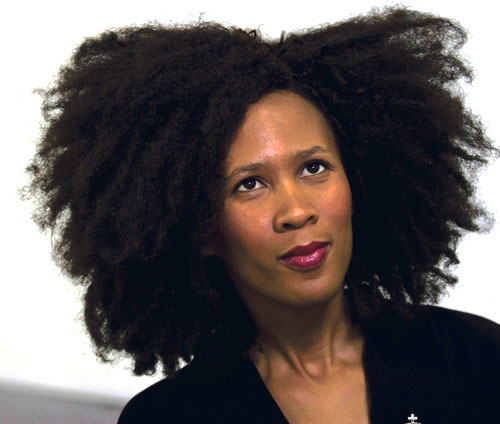 Give My Regards to Wonderland
Give My Regards to Wonderland
“I am not afraid”. It’s a beautiful phrase that pops up defiantly and sporadically all over global pop culture, from skate to rock, from fashion to hip hop. It’s invariably an expression of outsiderism, and precisely because it’s not the kind of phrase that the mainstream consumer media are likely to appropriate, it’s usually an authentic, emotionally stirring sentiment.
It a phrase that also appears on the back cover of the catalogue for the exhibition for photographic artist Lolo Veleko’s exhibition Wonderland which she produced as Standard Bank Young Artist of the year and which opened at the Durban Art Gallery on Thursday night. And truly Lolo Veleko, or Nontsikelelo Veleko, to give her her full and proper name, is not afraid. Wonderland constitutes a gloriously open-ended paean to the bravery of being defiantly one’s self.
Graffiti, clouds, incidental landscapes of the heart. Wonderland, suggests Veleko, both is and isn’t a place. According to the catalogue for the show, it’s a cat, it’s prejudice, it’s love, it’s rejection, it’s tea or coffee, it’s anything. It’s what you make it. And at the shimmering centre of Veleko’s fluid, technicoloured world are a series of portraits of young South Africans from Cape Town, Durban and Jozi, all radiating an idiosyncratic style that could comes from nowhere but the periphery of contemporary South Africa.
These beautifully dressed young people might look like hip young things in the context of the fashion photograph. But think for a second about the possible home lives of these stylish dressers. South Africa is a place of great freedom but it’s also a place of great repression and a profound conservatism, a place that is in many ways in conflict with the freedom radiating from Veleko’s subjects.
Then there is the fact that clothing has always played a special role in South Africa, particularly for the country’s working class. Given the temporary nature of material possessions for working class South Africans, both under the forced evictions of apartheid and the forced evictions of so many in 21st century liberated South Africa, the shoes you wear, the shirt you put on your back, these become prime expressions of identity for many in ways that are almost unimaginable by a middle class who are themselves for the most part obsessed by surface and image. Veleko’s portraits exist in the face of this acquisitive culture. The coolest kids at Veleko’s party are always wearing the weirdest clothes. This is not mall culture but the culture of the self reflected through a world that too often exists in opposition to it. And the result is spirited and heart-warmingly beautiful.
I have heard one or two criticisms that Veleko’s work is too European. And, in truth, her work does fit into the same loose genre as the work produced by American and particularly European cutting edge culture mags such as Trace and Dazed&Confused. In these magazines, fashion is often presented as documentary, and more to the point, often is documentary. But the style is one that was heavily influenced by (or ‘stolen from’ if you like) African street photography, and if anything, Veleko is only re-appropriating a tradition that has its roots in the streets of the continent. And, unlike the culture mags, she is not concerned with the culture of cool.
But I doubt that she is that concerned with the disjuncture between African and European aesthetics. For one thing, Veleko is too much of a global talent for such continental parochialism. For another, the separation between Europe and Africa is based on essentially false premises. For many, these two words represent two utterly different realities, two vastly different paradigms. But hundreds of years of colonialism and migration have ensured that the histories of the two continents are ineluctably intertwined. And nowhere is this truer than in contemporary art, where the European narrative and African narratives are inseparable.
But Veleko is aware of these and other charges leveled at her. A stand-out work in the exhibition features words in a digital scrawl layered a photographic image. These words include “the art sweety of the moment” and other far less ambivalent insults. So she knows. But does she care? It would be hard not to. But perhaps when you’re capable of finding such a wonderful Wonderland in contemporary South Africa, where so many see dark skies, such insults hardly matter.
© PETER MACHEN 2017